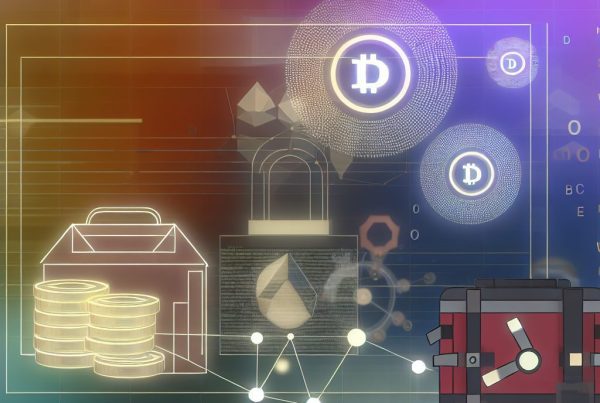What Is a Crypto Governance Vote?
The cryptocurrency landscape is evolving rapidly, and with it comes the need for effective governance mechanisms. A crypto governance vote is a crucial component of decentralized finance (DeFi) and blockchain projects, allowing stakeholders to participate in decision-making processes. This article delves into the intricacies of crypto governance votes, their significance, and how they shape the future of blockchain technology.
Understanding Crypto Governance
At its core, crypto governance refers to the frameworks and processes that dictate how decisions are made within a blockchain network. Unlike traditional organizations, where a select few hold power, decentralized networks empower all stakeholders, including token holders, developers, and users, to have a say in the project’s direction.
Governance in the crypto space can be categorized into two main types:
- On-chain governance: Decisions are made through formal voting mechanisms embedded in the blockchain protocol.
- Off-chain governance: Discussions and decisions occur outside the blockchain, often through forums or social media, with the implementation of changes occurring later on-chain.
The Mechanics of a Crypto Governance Vote
A crypto governance vote typically involves several key steps:
- Proposal Creation: Any stakeholder can propose changes or improvements to the protocol. This could range from technical upgrades to changes in the economic model.
- Discussion Phase: Proposals are discussed within the community, allowing stakeholders to voice their opinions and suggest modifications.
- Voting: Once a proposal has garnered enough support, a formal vote is initiated. Token holders usually cast their votes based on the number of tokens they possess.
- Implementation: If a proposal receives the required majority, it is implemented into the protocol, often through a software upgrade.
Why Are Crypto Governance Votes Important?
Crypto governance votes play a vital role in ensuring that blockchain projects remain decentralized and community-driven. Here are some reasons why they are essential:
- Decentralization: Governance votes prevent centralization of power, ensuring that no single entity can dictate the future of the project.
- Community Engagement: They foster a sense of ownership among stakeholders, encouraging active participation and investment in the project’s success.
- Adaptability: Governance votes allow projects to adapt to changing market conditions and technological advancements, ensuring long-term viability.
Types of Governance Tokens
Governance tokens are the backbone of crypto governance votes. They grant holders the right to participate in decision-making processes. Here are some common types of governance tokens:

- Utility Tokens: These tokens provide access to specific features or services within a platform, often including governance rights.
- Security Tokens: Represent ownership in an asset or company, often providing voting rights related to the underlying asset.
- Stablecoins: Some stablecoins incorporate governance features, allowing holders to vote on protocol changes.
Real-World Applications of Crypto Governance Votes
Several prominent blockchain projects utilize governance votes to shape their ecosystems. Here are a few notable examples:
1. Ethereum 2.0
Ethereum’s transition to a proof-of-stake (PoS) consensus mechanism involves extensive community input. Ethereum Improvement Proposals (EIPs) allow developers and stakeholders to propose changes, which are then voted on by the community. This process ensures that the network evolves in a way that reflects the interests of its users.
2. MakerDAO
MakerDAO, the decentralized lending platform behind the DAI stablecoin, employs a governance token called MKR. MKR holders can vote on critical decisions, such as risk parameters and collateral types, directly influencing the stability and functionality of the DAI ecosystem.
3. Tezos
Tezos is known for its on-chain governance model, allowing stakeholders to propose and vote on protocol upgrades without the need for hard forks. This unique approach has enabled Tezos to evolve continuously while maintaining community consensus.
Challenges and Criticisms of Crypto Governance Votes
While crypto governance votes offer numerous benefits, they are not without challenges:
- Voter Apathy: Many token holders may not participate in governance votes, leading to decisions being made by a small, active minority.
- Whale Influence: Large holders, or “whales,” can disproportionately influence outcomes, undermining the democratic nature of governance.
- Complexity: The technical nature of proposals can deter participation from less experienced users, leading to a governance system that may not represent the broader community.
Future of Crypto Governance Votes
The future of crypto governance votes is likely to be shaped by several trends:
- Increased Participation: As education and awareness grow, more stakeholders are expected to engage in governance processes.
- Improved Tools: The development of user-friendly interfaces and tools will facilitate easier participation in governance votes.
- Hybrid Models: Projects may adopt hybrid governance models that combine on-chain and off-chain mechanisms to enhance decision-making.
FAQs About Crypto Governance Votes
What is the purpose of a crypto governance vote?
The purpose of a crypto governance vote is to allow stakeholders to participate in decision-making processes regarding the future direction and changes to a blockchain project.
How do I participate in a crypto governance vote?
To participate, you typically need to hold governance tokens associated with the project. You can then cast your vote during the voting period, often through a designated platform or wallet.
What happens if a proposal is rejected?
If a proposal is rejected, it will not be implemented, and the project will continue under its existing governance structure until a new proposal is made.
Can anyone create a proposal?
In many projects, any stakeholder with governance tokens can create a proposal. However, some projects may have specific requirements or thresholds that must be met before a proposal can be submitted.
Are governance votes secure?
While governance votes are generally secure, they can be susceptible to manipulation, especially if large holders dominate the voting process. Projects are continually working to enhance security and fairness in governance.
Conclusion
Crypto governance votes are a fundamental aspect of decentralized blockchain projects, enabling community participation and ensuring that no single entity can control the network’s future. As the cryptocurrency industry continues to mature, the importance of effective governance mechanisms will only grow. By understanding how these votes work and their implications, stakeholders can better navigate the evolving landscape of digital assets.
For the latest updates and insights into the cryptocurrency world, consider visiting Bitrabo. Stay connected with me on social media: X, Instagram, and Threads.
Disclaimer: This article is for informational purposes only and should not be considered financial advice. Always conduct your own research before making investment decisions.
The Crypto Watchlist of the Week 🔎
Subscribe to receive expert-curated projects with real potential—plus trends, risks, and insights that matter. Get handpicked crypto projects, deep analysis & market updates delivered to you.


